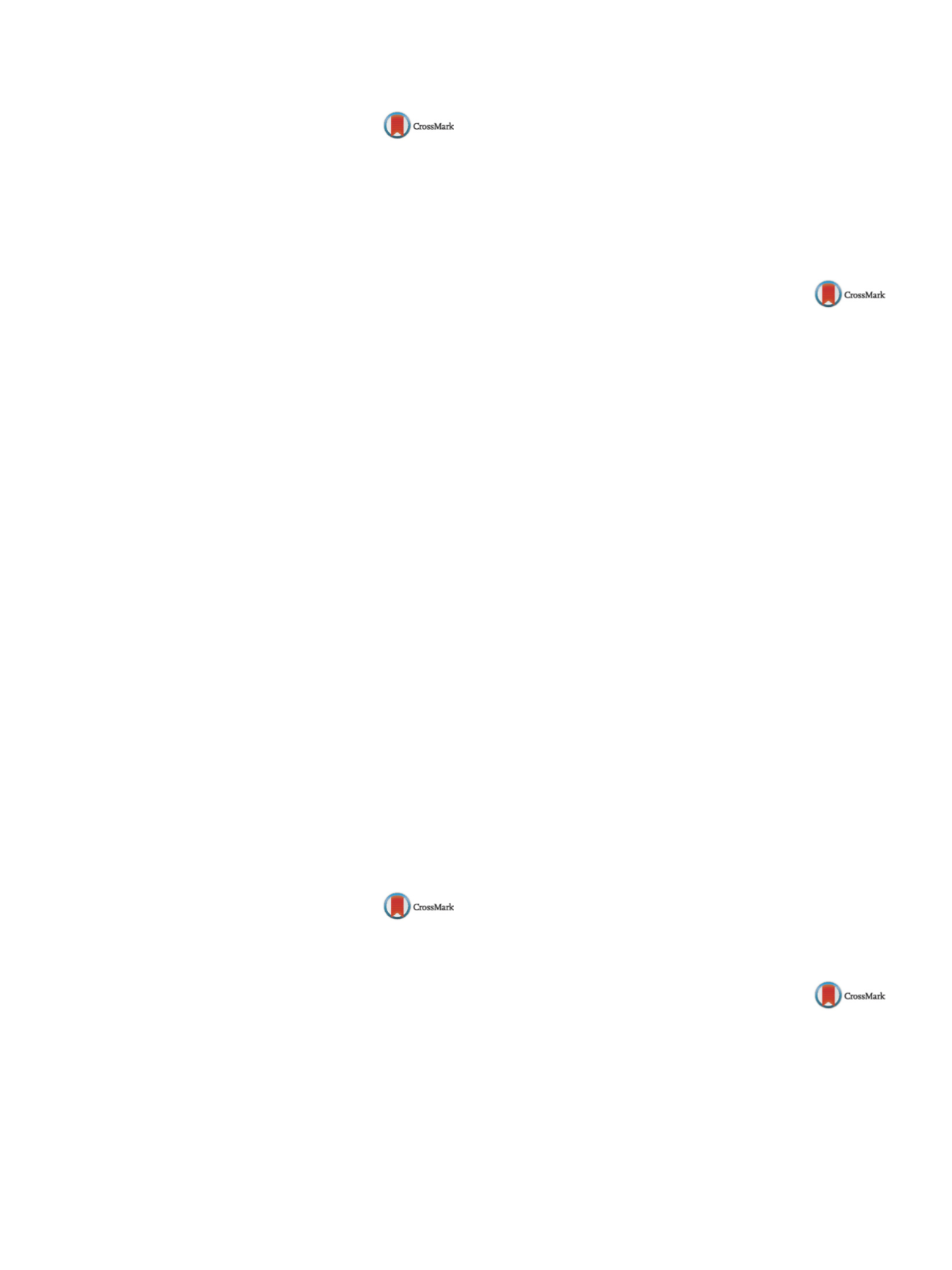

S410
25th European Congress of Psychiatry / European Psychiatry 41S (2017) S405–S464
EV0016
The effectiveness of teaching positive
psychology on dysfunctional attitudes
and emotional self-regulation of
withdrawing addicts
S. Ghahari
1 , 2, Z. Farhanghi (Master of Clinical Psychology)
3 , 4 ,∗
,
B. Gheytarani (Master of Clinical Psychology)
3 , 51
Iran University of Medical Sciences (IUMS), Center of Excellence in
psychiatry, School of Behavioral Sciences and Mental Health,
Department of Mental Health, Tehran, Iran
2
Psychiatry and Behavioral Sciences Research Center, Addiction
Institute, Department of Psychiatry, Mazandaran University of
Medical Sciences, Sari, Iran
3
Islamic Azad University of Tonekabon, Tonekabon, Iran
4
Clinical Psychology, Tehran, Iran
5
Clinical Psychology, Uromia, Iran
∗
Corresponding author.
E-mail address:
ghahhari.sh@iums.ac.ir(S. Ghahari)
Objective
Negative attitudes and the inability of emotion regu-
lation can make individuals vulnerable against addiction. In this
field, the main objective of this study is to investigate effective-
ness of teaching positive psychology on dysfunctional attitudes and
emotional self-regulation of withdrawing addicts.
Methods
This study is conducted using semi-empirical method
in form of pretest posttest. Statistical population consists of all
addicted people referred to Addiction Treatment Camps of Karaj by
2015. Among these camps, Vardavard Camp is selected randomly
and among the referees, 30 people of those who were qualified
to participate in this study and were satisfied for this action were
selected and were placed in two experimental and control groups.
Experimental group received positive psychology intervention and
control group was in waiting list. Both groups fulfilled dysfunc-
tional attitude scale and emotional self-regulation scale in baseline
and after treatment. Obtained data have been analyzed using inde-
pendent
t
-test and covariance in SPSS-22.
Finding
There is significant difference between two groups at the
end of intervention in terms of dysfunctional attitudes and emo-
tional self-regulation (
P
< 0.05).
Conclusion
Teaching positive psychology can lead to change in
dysfunctional attitudes and emotional self-regulation of addicted
people.
Keywords
Positive psychology; Dysfunctional attitudes;
Emotional self-regulation; Addiction
Disclosure of interest
The authors have not supplied their decla-
ration of competing interest.
http://dx.doi.org/10.1016/j.eurpsy.2017.01.345EV0017
Acceptance and commitment therapy
and anxiety disorders: Clinical case
R. Guijarro
1 ,∗
, M. Cervi˜no
2, P. Castrillo
21
Complejo Hospitalario Universitario de Granada, Servicio Andaluz
de Salud, Unidad de Salud Mental Comunitaria, Granada, Spain
2
Complejo Hospitalario Universitario de Granada, Servicio Andaluz
de Salud, Unidad de Rehabilitación de Salud Mental, Granada, Spain
∗
Corresponding author.
Acceptance and commitment therapy (ACT) is a third-generation
therapy that relates to human suffering as an inherent part of life
in the human condition. Concerning personal values, ACT is focused
on the acceptance of suffering, by doing away with the avoidance
of things that cause us discomfort.
The goal of the therapy is to make a person’s reactions to suffering
more flexible, working with the role of the symptoms rather than
with the eliminating the symptoms themselves.
This paper shows how the application of this therapy to a per-
son with generalized anxiety disorder helps to reduce symptoms
such as uncontrollable worrying, lack of concentration and mus-
cular tension that these patients often suffer. The modification
of symptoms has been measured by a single case study, where
the symptoms are assessed by questionnaires before and after the
treatment’s application. Diagnosis was made according to the Diag-
nostic and StatisticalManual ofMental Disorders’ (DSM-IV) criteria.
Disclosure of interest
The authors have not supplied their decla-
ration of competing interest.
http://dx.doi.org/10.1016/j.eurpsy.2017.01.346EV0018
Patterns of dissociative (conversion)
disorder cases in private psychiatric
facility and the effectiveness of an
indigene model of psychotherapy
M.I. Hussain
Khyber Pakhtunkhwa Health Care Commission, Iftikhar Psychiatric
Hospital, Peshawar, Pakistan
This is descriptive study was carried out on newly diagnosed dis-
sociative (conversion) disorder patients admitted in private health
care facility, Iftikhar Psychiatric Hospital Peshawar.
The studied was carried out from January 2012 to December 2012.
Cases were diagnosed according to international classification of
disease (ICD-10) diagnostic criteria. Subjects were selected through
purposive sampling. A total of 139 patients were included in this
study. Patterns of and disorder and demographic will be presented
in presentation.
Due to sociocultural sensitivity of applying dialectical and CBT an
indigenes model of psychotherapy was applied.
Stage 1: admission of conversion disorder cases for four days
admission with informed consent, supportive psychotherapy, and
brief psycho-education of attendants to avoid reinforcement of the
patient’s behavior. Parental single dose medication to break the
cycle of fits.
Stage 2: it involves exploratory sessionwith the patient and her/his
family members focusing on what is the problem with the patient
nature of stressors, and the family environment. Meanwhile, we
involve the patient in the recreational and occupational therapy to
avoid sick role and illness behavior.
Stage 3: psychotherapy session with the patient to give psycho-
education and insight of her/his mental problem. Discussing
different options, and facilitating the patient to come up with the
best possible desirable option. Psychotherapy of the family mem-
bers involved psycho-education about the patient’s mental illness,
its association with the prevailing stressors, and avoiding rein-
forcement. Responses have been 85% improvement in conversion
disorder, 90% in sensory symptoms, 98% in motor symptoms, 95%
in mixed symptoms.
Disclosure of interest
The author has not supplied his declaration
of competing interest.
http://dx.doi.org/10.1016/j.eurpsy.2017.01.347EV0019
The prevalence and risk factors of
anxiety disorders in an Egyptian
sample of school and students at the
age of 12–18 years
A. Ismail
Alazhar University, Psychiatry, Cairo, Egypt
Background
generalized anxiety disorder (GAD) are highly preva-
lent and impairing conditions among children and adolescent.
There are some general population studies that have examined
these conditions during the early life course.
The primary objectives of this study were to examine the
prevalence, and socio-demographic factors related to GAD in


















